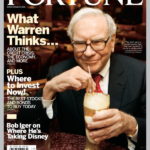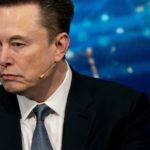The 20-month feud between the Western Hemisphere’s two most powerful oil companies over the biggest offshore discovery in a generation hinged on a single clause of a contract few people have ever seen.
The ensuing dispute upended Chevron’s and Hess’s strategies for nearly two years and threatened to mar the legacies of both companies’ CEOs. The story behind how it unfolded shows how American oil executives’ usual cordial relationships were pushed to the breaking point when a $1 trillion discovery was at stake.
“It should have been resolved much quicker,” Chevron CEO Mike Wirth said in an interview Friday. “This was a straightforward, plain reading of a contract.”
Exxon said it was obligated to defend its rights under the agreement.
“We had a clear duty to our investors to consider our preemption rights to protect the value we created,” the company said in a statement. “We welcome Chevron to the venture.”
The following account is based on Bloomberg reporting over nearly two years, including on- and off-the-record conversations with more than two dozen analysts, fund managers, traders and current and former company employees.
It began toward the end of 2023, when the US oil industry was basking in the aftermath of the price surge caused by Russia’s invasion of Ukraine. In a blow to the clean-energy transition, the war had underscored the continued importance of fossil fuels and furnished producers with record profits.
But the bonhomie did not extend to Texas. There, Exxon executives bristled at Chevron talking about the Guyana oil field as if they already owned it.
For Chevron and Hess, the deal was simple. Chevron would buy Hess in an all-stock transaction and assume ownership of the smaller company’s share of Stabroek. But there was a wrinkle. The joint operating agreement governing the Stabroek partnership contained a right-of-first-refusal clause. If one company decided to sell its stake, it must first be offered to the other two partners.
Lawyers for Chevron and Hess had studied the clause in detail during the due diligence process and concluded it did not apply because their deal was structured as a corporate merger rather than an asset sale.
But neither Chevron or Hess had reached an agreement over this interpretation with Exxon before their public announcement. To Exxon, Chevron’s proposed purchase amounted to a change of control in the Hess stake. And thus, the company believed it triggered the right-of-first-refusal.
The companies began talks in private but failed to make much progress. In early 2024, Chevron disclosed the dispute in a regulatory filing. Initially the market reaction was muted, with investors figuring negotiations would be concluded swiftly.
“We understand the intent of this language, of the whole contract, because we wrote it,” Chapman said, as the clinking of diners’ plates fell silent. “Most observers in this industry would understand our reputation for rigor, attention to detail in contract language. I mean, it’s a brand we have as a company.”
Questions began to grow around Exxon’s intentions. Did it want to buy Hess itself? Or the company’s stake in Guyana’s oil fields? Or was this just a play to torpedo Chevron’s purchase?
Instead, Woods said, Exxon’s goals in arbitration were to “secure and confirm” the right-of-first-refusal, understand the value of that right, and “evaluate that value and do what’s in the interests of Exxon Mobil shareholders.”
The thinking appeared to be that the right of first refusal held some value, even if it was not exercised, which should benefit shareholders.
Wirth and John Hess were becoming frustrated with Woods’s approach. Wirth, who previously had a good working relationship with his Exxon counterpart, considered arbitration an overly aggressive move that effectively ended constructive discussions between the companies. He was confident in his position and did not feel the need to compromise in a settlement.
This appeared to support Chevron and Hess’s case because the Guyana stake would still be held by Hess’s Guyana unit, even if that would now be controlled by Chevron. But Exxon believed the structure of the deal amounted to an attempt to circumvent the intention of the contract, which was to provide a right of first refusal to the other partners.
The contract, however, was written under English law, which typically places higher value on the actual words as written rather than their intent. Wirth and Hess, backed by a legal team in London, continued to express confidence in their interpretation.
Hess vigorously denied the claims and they were later found to be baseless and overturned by the FTC. Critics called the case politically motivated, driven by then-President Joe Biden’s antipathy toward the oil industry.
As the case dragged on through the second half of 2024, Hess could barely disguise his contempt for Woods’s decision to go to arbitration. At one dinner in New York, he expressed his “disgust” at the company’s tactics over what he claimed was a straightforward transaction. He would never have signed a contract that effectively blocked him from selling his company, he said.
Still, Hess and Wirth continued to express confidence in securing victory, both publicly and privately. RBC Capital Markets analyst Biraj Borkhataria noted “the consistency to which Chevron management has communicated its stance around this deal.” It was crucial, given Chevron “had more at stake with this arbitration than Exxon did.”
Last week, Wirth and Hess were finally vindicated.
Shortly after 5:30 p.m. Thursday in New York, the FTC — now headed by an appointee of President Donald Trump — tossed out the ruling that blocked Hess from joining Chevron’s board. Thirteen hours later, word broke that the ICC panel had ruled in favor of Hess and Chevron. By the time trading on Wall Street opened at 9:30 a.m., Chevron had closed on the takeover.
The deal was finally done.









